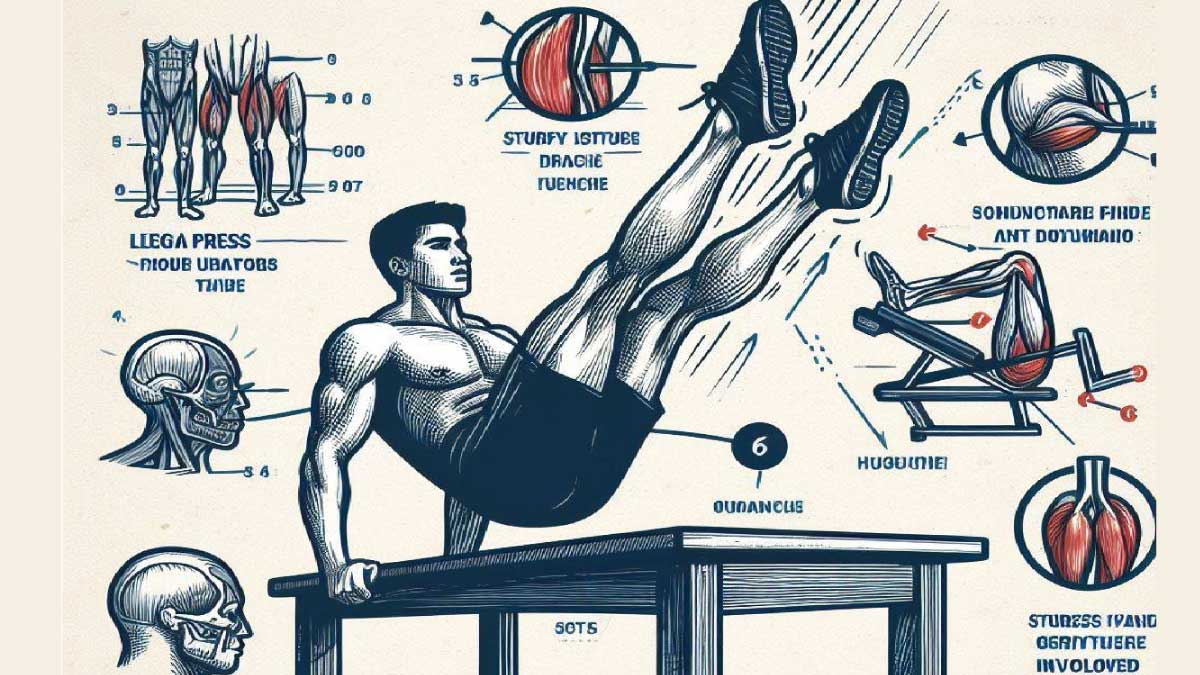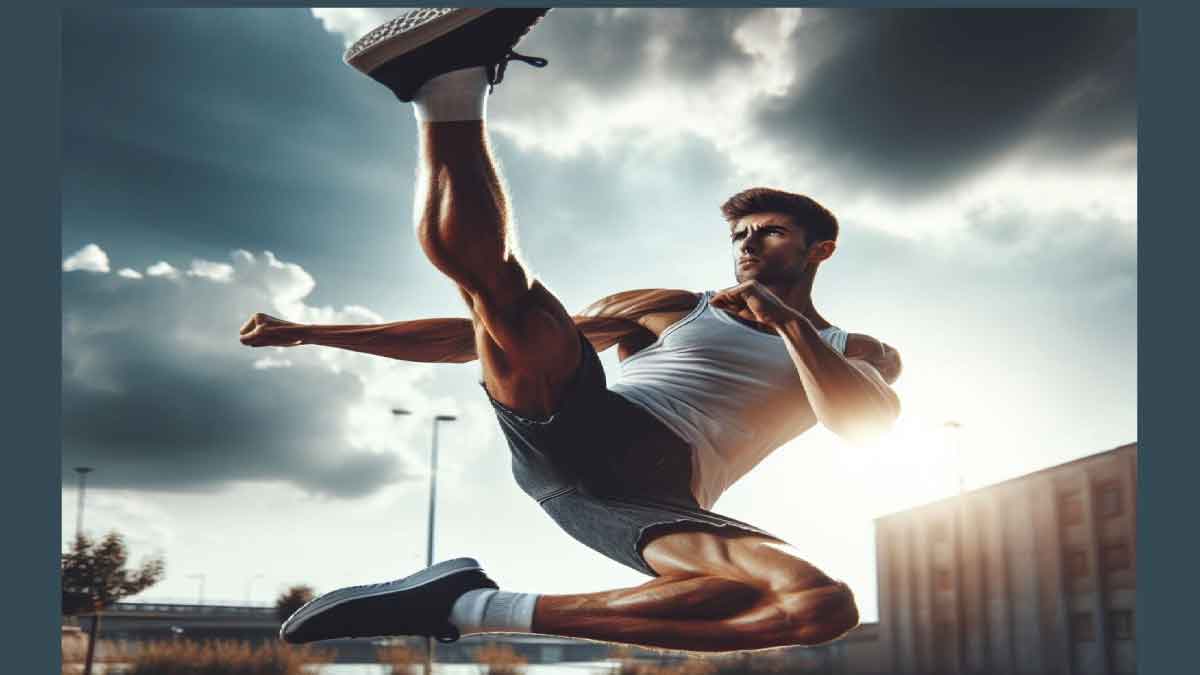When it comes to fitness routines, leg exercises hold a paramount importance. Among these, the leg press exercise is widely popular for its ability to target the lower body muscles effectively. However, there are instances where access to a leg press machine may be limited or you might be looking to add variety to your routine. In such cases, knowing the best leg press alternative exercises becomes invaluable. Here, we unveil seven highly effective Leg Press Alternative, ensuring your lower body gets the workout it deserves.
7 Best Leg Press Alternative

Squats: The Ultimate Leg Strengthener
Squats stand as the cornerstone of lower body exercises, revered for their unparalleled ability to engage multiple muscle groups simultaneously. The quadriceps, hamstrings, glutes, and calves all come into play during this compound movement, making it a comprehensive leg workout. Mastering the correct form is essential for optimal results. Here’s how to perform a squat effectively:
How to Do Squats Exercise:
1- Stand with your feet shoulder-width apart to establish a stable base.
2- Lower your body by bending your knees and hips, mimicking the motion of sitting back into an imaginary chair.
3- Keep your chest upright and your back straight throughout the movement to maintain proper posture.
4- Descend until your thighs are parallel to the ground, ensuring your knees do not extend beyond your toes.
5- Engage your leg muscles and push through your heels to return to the starting position, completing one repetition.
Squats offer a myriad of benefits beyond just building leg strength. They also improve core stability, enhance mobility, and promote overall functional fitness.
Lunges: Adding Functional Strength
Lunges are a versatile exercise renowned for their ability to target each leg individually, promoting balance and symmetry while building functional strength. By isolating one leg at a time, lunges provide a unique challenge that translates to real-world movements. Here’s how to execute a lunge with proper form:
How to Do Lunges Exercise:
1- Begin by standing upright with your feet together and your core engaged to maintain stability.
2- Take a controlled step forward with one leg, ensuring a comfortable stride length.
3- Lower your body by bending both knees until they form 90-degree angles, with your front thigh parallel to the ground.
4- Keep your torso upright and your chest lifted throughout the movement to avoid leaning forward.
5- Push through the heel of your front foot to return to the starting position, then repeat the movement on the other leg to complete one repetition.
Lunges primarily target the quadriceps, hamstrings, and glutes, making them an effective exercise for building lower body strength and muscle definition. Additionally, lunges help improve hip flexibility and enhance proprioception, the body’s awareness of its position in space.
Step-Ups: Elevating Your Leg Workout
Step-ups provide a dynamic alternative to traditional leg exercises, simulating the movement of ascending stairs and offering functional benefits for daily activities. By targeting the quadriceps, hamstrings, and glutes, step-ups effectively strengthen the lower body while improving balance and coordination. Here’s how to perform step-ups with proper technique:
How to Step-ups Exercise:
1- Begin by standing in front of a sturdy platform or bench, ensuring it is stable and secure.
2- Step onto the platform with one foot, focusing on driving through the heel to lift your body upward.
3- Engage your core muscles to maintain stability as you bring the trailing leg up to meet the leading leg on the platform.
4- Pause briefly at the top of the movement to fully engage the muscles of the supporting leg.
5- With control, lower yourself back down by stepping back with the leading leg, returning to the starting position.
Incorporate step-ups into your workout routine to enhance lower body strength, improve balance, and develop functional fitness for everyday tasks.
Bulgarian Split Squats: Unilateral Leg Power
Bulgarian split squats offer a unilateral variation of the traditional squat, challenging each leg independently to improve balance and correct muscle imbalances. By primarily targeting the quadriceps, hamstrings, and glutes, this exercise promotes strength and stability in the lower body. Here’s how to perform Bulgarian split squats correctly:
How to Do Bulgarian Split Squats Exercise:
1- Stand facing away from a bench or elevated surface, with one foot resting on it and the other foot positioned forward.
2- Maintain an upright posture with your chest lifted and your shoulders back throughout the movement.
3- Lower your body by bending the front knee and descending until your front thigh is parallel to the ground.
4- Ensure that your back knee hovers just above or lightly touches the ground without resting.
5- Push through the heel of the front foot to return to the starting position, engaging the muscles of the leg and glutes.
Incorporating Bulgarian split squats into your leg workout routine can help address muscle imbalances, improve lower body strength, and enhance overall athletic performance. Focus on maintaining proper form and control throughout the exercise to maximise its effectiveness and minimise the risk of injury.
Deadlifts: Building Lower Body Strength
Deadlifts are a foundational compound exercise renowned for their effectiveness in building lower body strength, particularly targeting the hamstrings, glutes, and lower back. Additionally, they engage the muscles of the back and core, making them a comprehensive full-body workout. Here’s how to perform deadlifts with proper form:
How to Do Deadlifts:
1- Begin by standing with your feet hip-width apart, ensuring the barbell or dumbbells are positioned in front of your thighs.
2- Hinge at the hips while keeping your back flat, lowering the weight towards the ground. Maintain a slight bend in your knees throughout the movement.
3- Engage your core muscles to stabilise your spine as you lower the weight, avoiding rounding or arching your back excessively.
4- Drive through your heels to stand up straight, simultaneously extending your hips and knees. Focus on squeezing your glutes at the top of the movement to maximise muscle activation.
5- Lower the weight back down with control, maintaining proper form and alignment, and repeat for the desired number of repetitions.
Incorporating deadlifts into your workout routine can lead to significant gains in strength, muscle mass, and overall athleticism.
Glute Bridges: Activating the Posterior Chain
Glute bridges are a highly effective exercise for targeting the glutes and hamstrings while also engaging the core muscles and posterior chain. This exercise not only builds strength but also improves hip mobility and can help alleviate lower back pain. Here’s how to perform glute bridges correctly:
How to Do Glute Bridges:
1- Lie on your back with your knees bent and feet flat on the ground, hip-width apart. Keep your arms relaxed by your sides.
2- Push through your heels to lift your hips towards the ceiling, focusing on contracting your glutes at the top of the movement.
3- Ensure that your shoulders, hips, and knees form a straight line at the top of the bridge position, avoiding overarching your lower back.
4- Hold the contraction briefly, then lower your hips back down with control, maintaining tension in your glutes and hamstrings.
5- Repeat the movement for the desired number of repetitions, focusing on smooth and controlled motion throughout.
FAQs About Leg Press Alternative:
What are the benefits of using leg press alternative exercises?
Leg press alternative exercises offer several benefits, including targeting multiple muscle groups, enhancing functional strength, improving balance and stability, and providing variety to your workout routine.
Can I achieve similar results with leg press alternative exercises as with the leg press machine?
Yes, you can achieve similar results with leg press alternative exercises, as they effectively target the same muscle groups as the leg press machine. Additionally, incorporating a variety of exercises can help prevent plateaus and promote overall lower body strength and development.
Are leg press alternative exercises suitable for beginners?
Yes, many leg press alternative exercises are suitable for beginners, as they can be modified to accommodate different fitness levels and abilities. Starting with bodyweight variations and gradually increasing resistance or difficulty can help beginners safely progress in their workouts.
What if I don’t have access to gym equipment for leg press alternative exercises?
There are plenty of leg press alternative exercises that can be performed with minimal or no equipment. Bodyweight exercises such as squats, lunges, and step-ups can be done at home or in any open space. Resistance bands or household items can also be used to add resistance to these exercises.
How often should I incorporate leg press alternative exercises into my workout routine?
The frequency of incorporating leg press alternative exercises into your workout routine depends on your individual fitness goals, current level of fitness, and overall workout schedule. Generally, aiming to include lower body exercises 2-3 times per week, with adequate rest between sessions, can help promote strength gains and muscle development.


